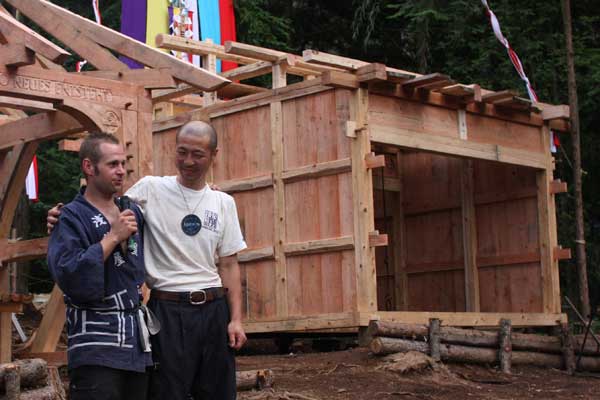So, this is what the tea house looked like inside when it was finished:
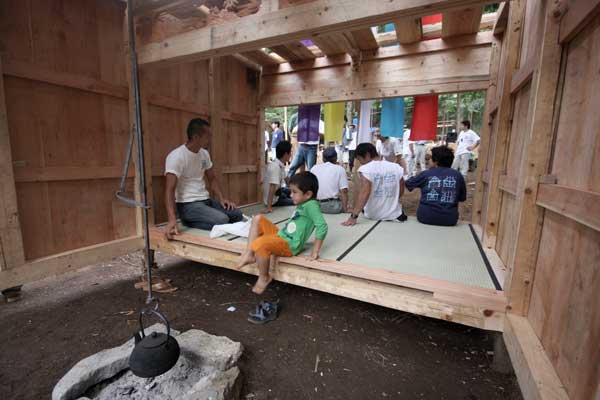
It has an open area at the front with a hearth and kettle (the Japanese blacksmith made the hook for this and it is very beautiful), and a raised area at the back with tatami mats which were also made on-site and I will post more about them in the future. There is tracking for sliding doors front and back and I guess these will be added later along with the roof, which I think will be made of wooden shingles.
It was made in a similar way to the European building; each piece is cut to shape and each joint is tested individually before it is all finally put together, so the final construction happens amazingly quickly. Here's how it happened with a little additional explanation from the scale model that they used to guide their work. Firstly the base frame was constructed and the rear half boarded out:
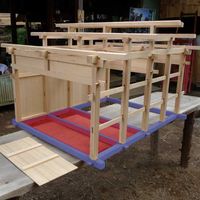
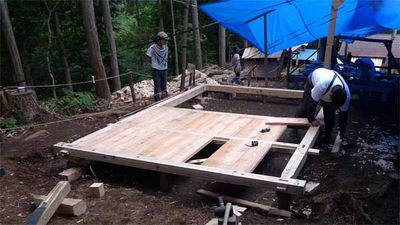
Then the three main upright frames were put together; the one in the centre marked in red has a lovely carved frieze, shown below stacked on the ground with the other two. I will post more about the Japanese wood carver later.
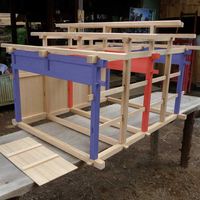
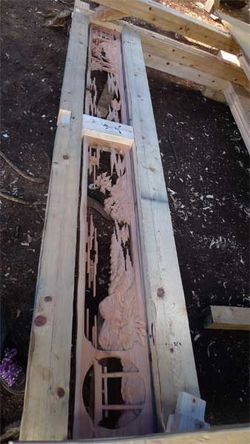
The side panels had been made in advance; hand sawn planks nailed to cross-laths using beautiful nails made by the Japanese blacksmith, and they were slotted into rebates cut into the uprights as the main body of the tea house was put together. Here you can see the first upright frame in place and the first side panels being slotted in (In the model the wall closest to the camera has been left out so you can see inside!)
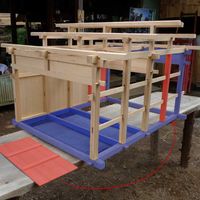
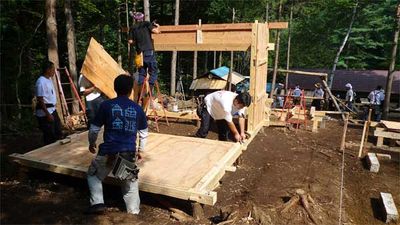
... and here is the final frame at the rear of the building being put into place:


Then the roof is built, starting with three cross-beams that tie the side panels in place. The Japanese are meticulous about keeping the site tidy and in the foreground of this picture you can see one of the carpenters with a lovely wooden rake used for clearing away the wood shavings:
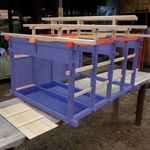
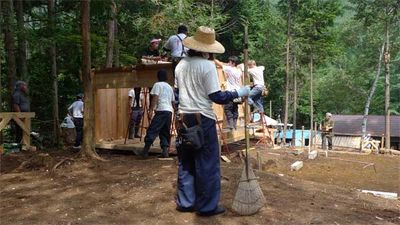
Then the first tier of the roof with two beams front and back, and a frame to hold the central beams:

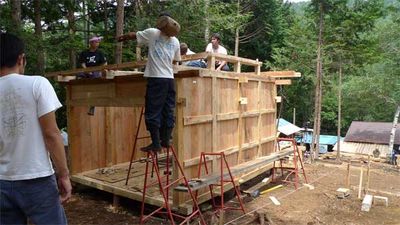
... and then the top tier of the roof, with a little persuasion(!):
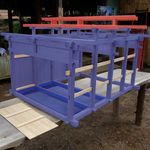
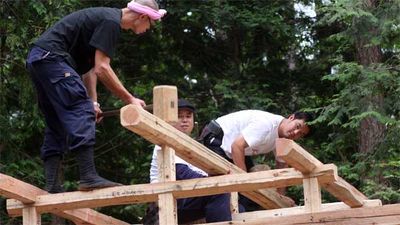
Finally, there were various inside fittings to be done; the long bars that secured the side walls, held in place by wedges, and the fittings to hold the tatami mats and take sliding doors either side:
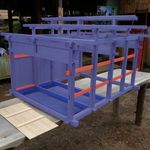
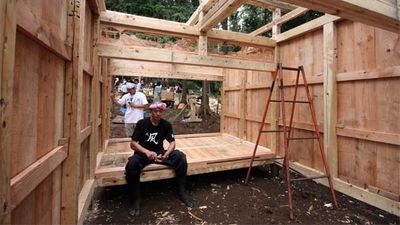
The completed tea house with Kesurokai organisers Hannes Schnelle and Amemiya san:
